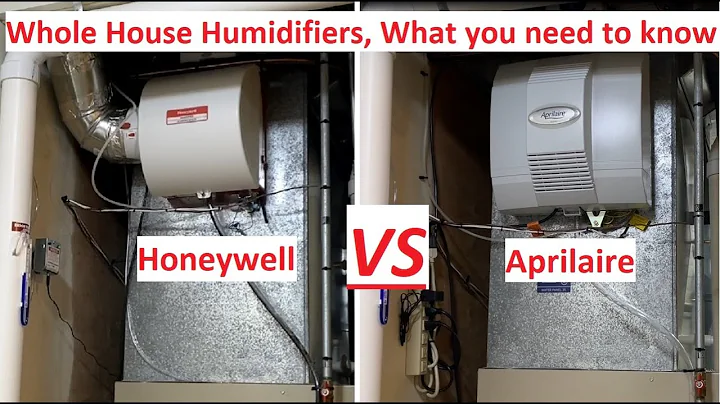Mastering Quick Valuation Methods for Apartment Building Investments
Table of Contents
- Introduction
- The Importance of Valuing an Apartment Building
- Step 1: Finding Comparable Properties
- Step 2: Gathering Data
- Step 3: Calculating the Value
- Method 1: Average Price per Door
- Method 2: Gross Rent Multiplier (GRM)
- Method 3: Capitalization Rate (Cap Rate)
- Method 4: Average of All Valuation Methods
- Pros and Cons of Quick Valuation Methods
- Conclusion
- Resources
💡 How to Value an Apartment Building in 15 Minutes
Investing in commercial real estate, particularly apartment buildings, can be a great way to generate passive income and build wealth. However, before making a purchase, it's essential to accurately determine the value of the property to ensure you're making a sound investment. In this article, we will explore how you can value an apartment building in just 15 minutes using four quick valuation methods. By following these steps and conducting your own analysis, you'll gain the confidence to assess whether a property is fairly priced, overpriced, or underpriced.
Introduction
Investing in an apartment building carries inherent risks, but with the right valuation methods, you can make informed decisions. Valuing an apartment building accurately is crucial to ensure you don't overpay or miss out on a profitable opportunity. In this article, we will guide you through the process of valuing an apartment building using four quick methods. These methods will provide you with a rough estimate of the property's value, giving you a starting point for negotiations and decision-making.
The Importance of Valuing an Apartment Building
Valuing an apartment building is an essential step in the property investment process. Without an accurate valuation, you risk paying too much for a property, limiting your potential returns. Conversely, undervaluing a property may lead to missed opportunities or a compromised investment. By understanding these quick valuation methods, you can make more informed decisions and assess whether a property aligns with your investment goals.
Step 1: Finding Comparable Properties
The first step in valuing an apartment building is to find three comparable properties. These comparable properties should ideally have a similar age, condition, and size. Comparing a 16-unit property to an 80-unit property or a property from a different era will yield inaccurate results. To find comparable properties, you can search online platforms like LoopNet or seek assistance from a commercial real estate broker. Brokers have access to databases containing extensive market data that can help you identify suitable properties for comparison.
Step 2: Gathering Data
Once you've identified your subject property and three comparable properties, gather the necessary data. There are four key pieces of information you'll need for each property:
- Average Price per Unit: Divide the purchase price of each property by the number of units to calculate the average price per unit.
- Total Gross Annual Rents: Determine the total gross annual rents for each property. This figure represents the total rental income before any deductions.
- Purchase Price: Note the purchase price of each comparable property.
- Cap Rate: The cap rate, or capitalization rate, is the net operating income divided by the purchase price. Calculate the cap rate for each comparable property.
Step 3: Calculating the Value
Now, let's dive into the four quick valuation methods that will help you determine the value of an apartment building.
Method 1: Average Price per Door
One of the simplest valuation methods is the average price per door. To calculate this, divide the purchase price of each property by the number of units. Then, find the average price per door by summing up the average price per unit for all four properties and dividing it by four. Multiply this average by the number of units in the subject property to find its value.
Method 2: Gross Rent Multiplier (GRM)
The Gross Rent Multiplier (GRM) is another effective method for quick valuation. The GRM is calculated by dividing the purchase price by the gross annual rents. A lower GRM indicates a greater value relative to rental income. Calculate the GRM for each comparable property and find the average. Multiply the average GRM by the gross annual rents of the subject property to determine its value.
Method 3: Capitalization Rate (Cap Rate)
The capitalization rate, or cap rate, is an essential metric for valuing income-producing properties. It represents the expected return on investment based on the property's net operating income. Determine the cap rate for each comparable property by dividing the net operating income by the purchase price. Calculate the average cap rate across all four properties and divide the annual net operating income of the subject property by the average cap rate to find its value.
Method 4: Average of All Valuation Methods
To further refine your valuation, consider taking the average of the values obtained from the three previous valuation methods. This provides a more comprehensive estimate of the property's worth. Add together the values from the average price per door method, the GRM method, and the cap rate method. Then, calculate the average of these three values to determine the final estimate of the subject property's value.
Pros and Cons of Quick Valuation Methods
While these quick valuation methods offer a convenient way to gauge the value of an apartment building, it's essential to recognize their limitations. Quick valuation methods provide rough estimates and should not replace a formal appraisal. They can help you quickly assess a property's potential, but for greater accuracy, consult a professional appraiser. Remember that external factors such as market conditions and property-specific details can significantly impact the property's value.
Conclusion
Valuing an apartment building efficiently is a valuable skill for any real estate investor. By utilizing these quick valuation methods, you can gain confidence in assessing a property's value before making investment decisions. While professional appraisals are still necessary for precise valuations, these methods provide a starting point for your analysis. Remember to consider the pros and cons of each method and not solely rely on one for your decision-making. With practice, you'll become more adept at valuing properties accurately and making informed investment choices.
Resources
Highlights
- Learn how to value an apartment building in just 15 minutes
- Four quick valuation methods to determine property value
- Find comparable properties and gather relevant data
- Calculate value using average price per door, gross rent multiplier, capitalization rate, and average of all methods
- Understand the pros and cons of quick valuation methods
- Gain confidence in assessing property value before making investment decisions
FAQs
Q: Should I solely rely on quick valuation methods when investing in an apartment building?
A: Quick valuation methods provide rough estimates and should not replace a professional appraisal. They are a useful tool for initial assessment but should be supplemented with expert advice and thorough due diligence.
Q: Are these quick valuation methods applicable to all types of properties?
A: The methods discussed in this article are primarily suitable for valuing income-producing properties like apartment buildings. Other property types may require different approaches or additional considerations.
Q: Can I use these methods to value properties in any market?
A: Yes, these methods can be applied in most real estate markets. However, remember that market conditions and specific property attributes can affect the accuracy of the valuations. It's crucial to consider local market knowledge and consult professionals when needed.
Q: How frequently should I update my property valuations?
A: Property valuations should be regularly reviewed to reflect changes in market conditions, rental income, or property improvements. Aim to reassess valuations at least once a year or whenever significant changes occur.
Q: What factors should I consider apart from these valuation methods?
A: While valuation methods provide useful insights, other factors such as location, market trends, property condition, neighborhood dynamics, and potential for future growth should also be considered when making investment decisions.
Q: How accurate are quick valuation methods compared to professional appraisals?
A: Quick valuation methods offer rough estimates and cannot match the precision and comprehensive analysis provided by professional appraisals. However, they can provide a reasonable starting point for investors to assess property values and make preliminary decisions.







